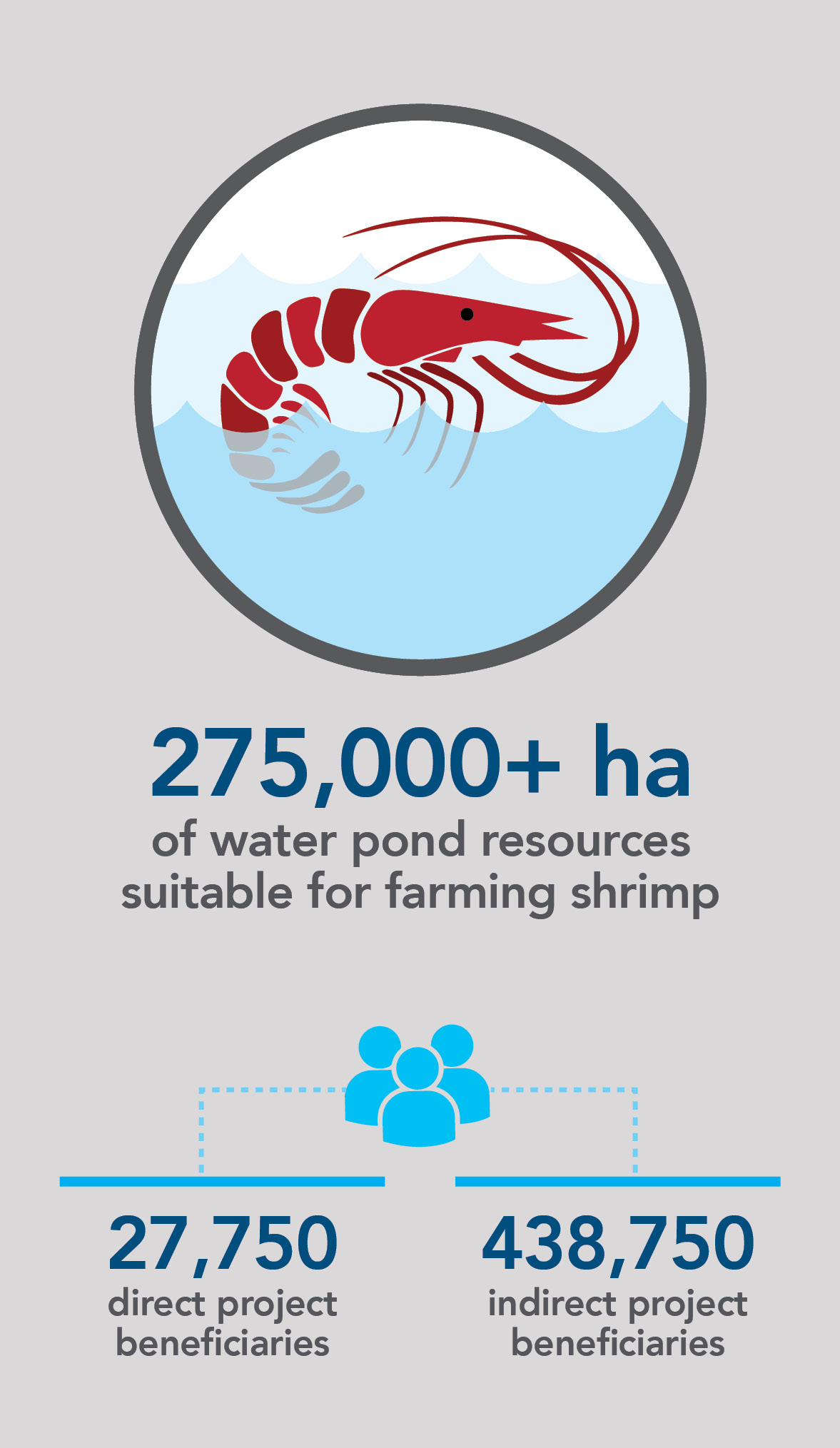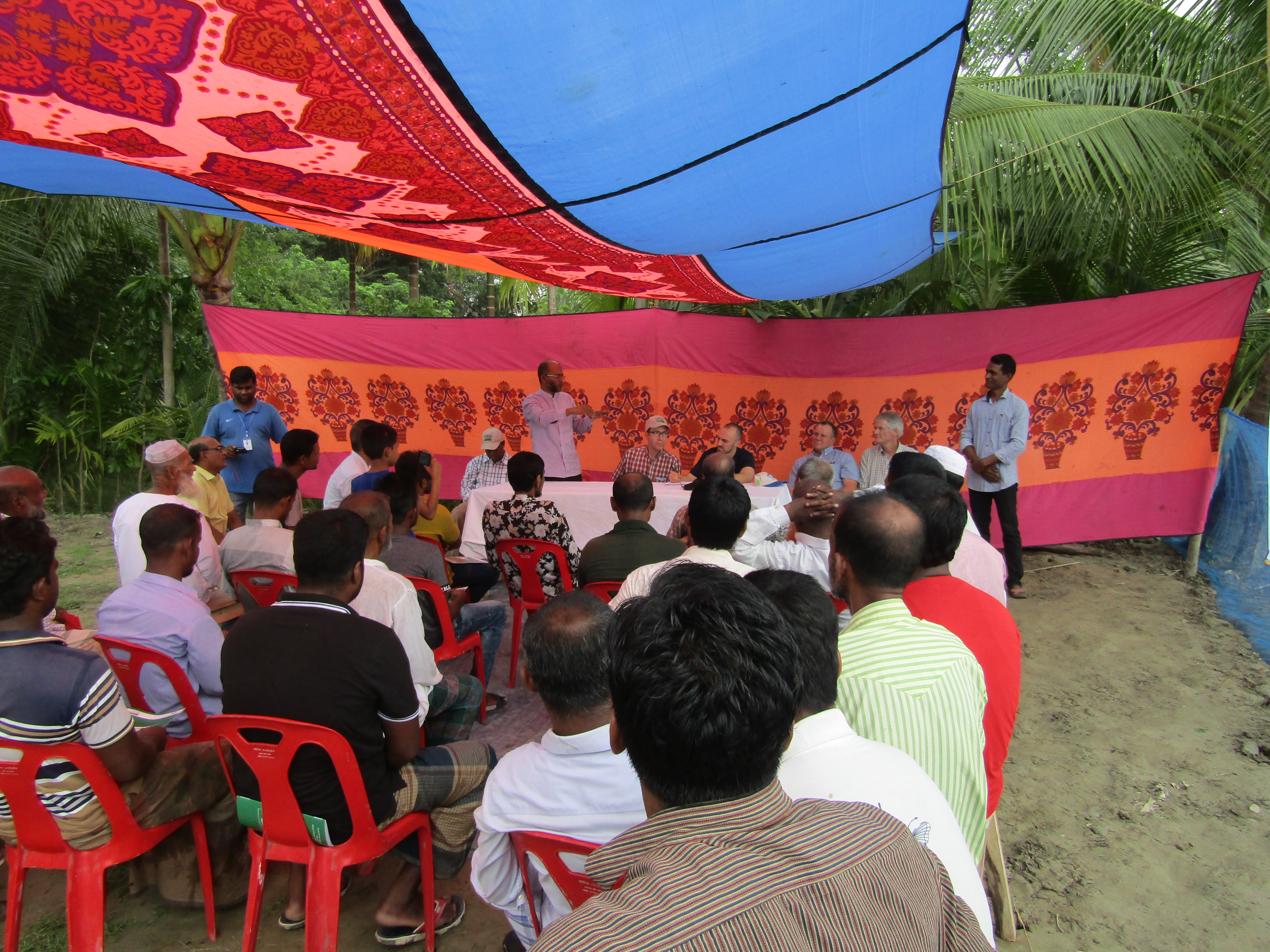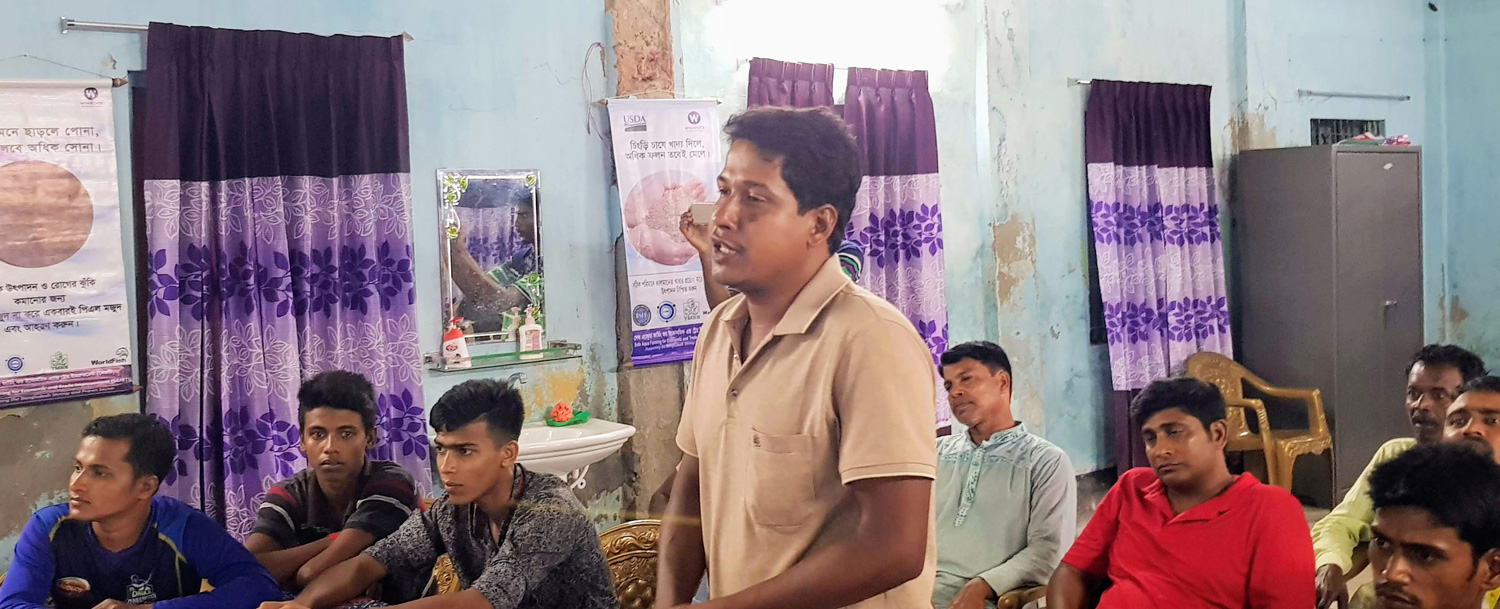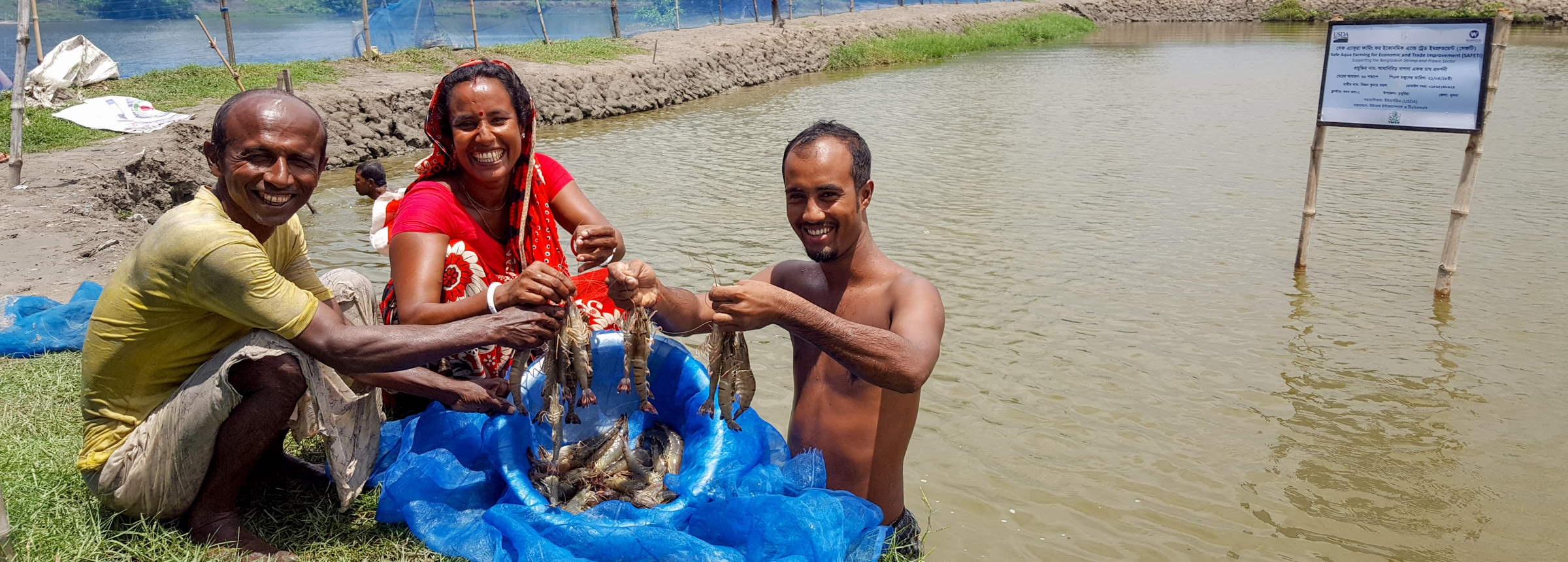Adding Science to Shrimp Farming
In Bangladesh, farmers share the lessons they've learned.
Shrimp and prawn farming have great potential in Bangladesh, but over the last few years many farmers have suffered financial losses because of frequent disease outbreaks and limited availability of good quality seed shrimp.
Winrock’s USDA-funded Safe Aqua Farming for Economic and Trade Improvement (SAFETI) aims to increase shrimp and prawn production and productivity, raise national exports and boost the incomes of everyone in the supply chain. In the 2018 production season, the project began work with 9,500 farmers in 10 upazilas in four districts of Bangladesh.
Farmers were trained on six key messages for better shrimp and prawn farming: keeping water depth between three to five feet; cleansing and disinfecting the water; ensuring biosecurity; starting off with healthy stock (the specific pathogen-free, polymerase chain reaction, post larvae, also known as SPF/PCR-tested PL), providing good feed for them and ensuring the water quality of the gher (the body of water where shrimp and prawns are cultivated). Farmers also learned how to keep a record book and simple business plan, something most of them had not been doing before.
 A USDA team visited SAFETI working areas from May 21-24, asking farmers what they have learned from SAFETI and how they are applying those lessons. Farmers said that SAFETI’s trainings have been very useful and they’ve learned quite a lot. Ensuring biosecurity and using SPF/PCR-tested PL are the most important things they’ve learned.
A USDA team visited SAFETI working areas from May 21-24, asking farmers what they have learned from SAFETI and how they are applying those lessons. Farmers said that SAFETI’s trainings have been very useful and they’ve learned quite a lot. Ensuring biosecurity and using SPF/PCR-tested PL are the most important things they’ve learned.

“We are doing prawn farming for a long time, but nothing was science-based,” said Khalid Hossain, a SAFETI farmer of Bagerhat. “Now we have understood, prawn is an animal and for better survival, growth and profit they should be given favorable water environment, quality food and biosecurity.”
“SAFETI has not only trained me on farming with clean seed and high-quality feed but also linked me with the hatcheries and feed companies,” said Md. Golam Sarowar of Chohera village, Dumuria Upazilla, Khulna (pictured at top of page, speaking). “I stocked only 17 days back after properly preparing my gher; the PLs look healthy and strong.”
Farmers have incorporated several of the practices they learned in the training, such as using SPF/PCR tested PL, improving the biosecurity situation and doing better pond preparation.

“We were not concerned about water depth, biosecurity, clean seed and good feed. We learned these from the training of SAFETI,” said Rezwan Fakir, of Khorshongo village, Dumuria, Khulna. “Shrimp farming became a loss project for us. We hope to make it profitable again with the help of SAFETI.” The USDA team was happy to see the early sign of project impacts. They understood the difference between trained and non-trained farmers. They also observed the overwhelming response from the other farmers, neighbours who are not registered with SAFETI.
During the visit, the team also met government officers; the deputy commissioner of Khulna, deputy directors of the Department of Fisheries, and other officers of the Fish Inspection and Quality Control Department in Khulna. They met with scientists of the Bangladesh Fisheries Research Institute, Bagerhat, and visited the Shrimp Health Management laboratory of the Institute’s Shrimp Research Centre.
“Shrimp is one of the main sectors that the Government of Bangladesh identified to emphasize for the development of this region,” said Md. Amin Ul Ahsan, deputy commissioner, Khulna, at the USDA meeting. “We are happy that the SAFETI project is working with a sector that is key to the development of the people of this region. We thank USDA for the project.”
Related Projects

